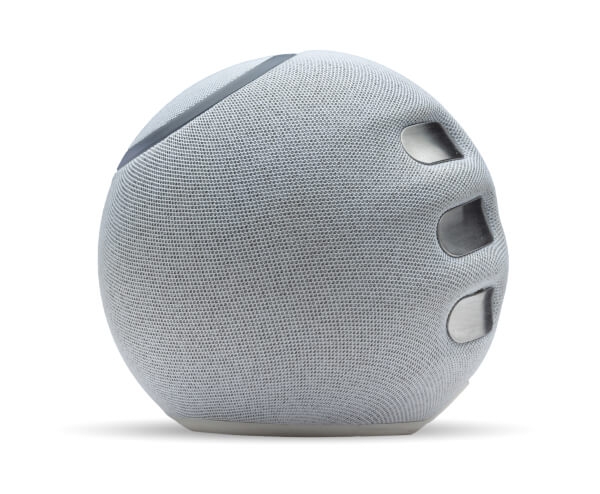What images does “meditation” bring up in your mind? Green grass, loose relaxed clothing, sitting on the floor…not things you normally associate with the workplace. But think again.
More than half of companies offer meditation packages or programs for their staff. These include Apple, Nike, AOL Warner, Google and many, many more. Corporate meditation is no longer a trend; it’s gone mainstream. And there are good reasons why.
Why is meditation important for businesses?
Nearly 70% of HR executives say that employee well-being is their top priority. At the same time, only roughly a quarter of employees say that their employer cares about their well-being. Well-being in the workplace doesn’t just happen. It requires dedicated resources and consistent effort, and it must focus squarely on the employees themselves – their mental health and resilience, day in and day out.
Fancy lunches, cool swag, and even annual bonuses are not enough. That’s why many businesses are turning to corporate meditation programs as an effective tool and long-term strategy to focus on employee wellbeing. Meditation is already well-established by clinical studies as having an amazing host of mind-body benefits, including lower blood pressure, reduced anxiety, better sleep, better emotional regulation, and more.
The good news for employers is that corporate meditation practice not only boosts the well-being of their workers; it helps the business too. Here are several reasons why corporate meditation is important for businesses, and why so many employers are embracing it as part of their employee wellness efforts:
- Increases productivity: A 2015 study demonstrated that meditation practice was linked to increased satisfaction, engagement, and performance on the job, all of which make employees more focused and productive.
- Helps reduce absenteeism: Employees who are stressed, anxious and depressed tend to ‘call in sick’ far more than those who aren’t. In a study from nearly 40 years ago, regular meditation practice was shown to reduce employee absenteeism by 85%!
- Helps to boost the “vibe” at the workplace: Meditation as a shared experience has powerful effects on the mood and wellbeing of groups as well as individuals. Whether doing group meditation or meditating alone, employees all benefit from the increased sense of connectedness and shared calm that corporate meditation provides.
- Helps to improve interpersonal relationships and teamwork: As employees feel more connected and empathetic towards one another, this makes them more attentive and better listeners – all of which leads to better teamwork and collaboration.
- Helps increase creativity and innovation: It’s been shown that even 10 minutes of meditation a day can improve creativity. For businesses, meditation in the workplace can enhance out-of-the-box thinking and innovation that lead to growth.
Although corporate meditation demands resources such as budget and time, it can actually help businesses save costs. By improving productivity, reducing sick days and employee turnover, and making employees more creative and collaborative, businesses can expect to see a positive ROI from their meditation programs in the long term.
Examples of corporate meditation programs
Companies large and small, all over the world, are coming around to the idea of corporate meditation. Here are three examples of big businesses that are leaders in innovation and already incorporate meditation in the workplace:
The meditation chambers at Google and YouTube headquarters in the San Francisco Bay Area are an innovative example of corporate meditation. The Immersive Spaces Series includes 5 meditation ‘pods’ where employees can disconnect from the physical and mental workspace, and take the time to reflect and recharge.
The meditation chambers feature next generation design and lighting that calms the senses and creates an opportunity to deeply immerse in the meditative space, any time during the workday.
NASA
It may surprise you to learn that one of the world’s premier scientific institutions is using corporate meditation to motivate its staff and increase wellbeing.
Yes, NASA enlisted the services of Kurtis Lee Thomas, a leading corporate mindfulness trainer, to teach “powerful breathwork biohacking”. Scientists and employees at NASA’s JPL (Jet Propulsion Laboratory) participated in the Breathwork Detox experience led by Thomas, and the results speak for themselves.
According to NASA, no previous employee program has ever elicited such a positive response, and staff are asking for more.
Viraj Profiles Ltd
Viraj Profiles Ltd is India’s largest manufacturer and exporter of stainless steel long products. During COVID, the company noted the extra stress and coping difficulties among its 9000 employees, and decided to take action.
Meditation rooms were set up at work locations all over India, and meditation webinars were run for employees as early as May 2020. The impetus for the program came from the company chairman and managing director, Mr. Neeraj Kochhar, who himself meditates regularly and is aware of the many benefits it provides.
Over the past year and a half, Viraj Profiles has delivered no less than 450 corporate meditation and motivational workshops for employees nationwide.
How to create a daily meditation routine inside a workplace?
The average workday is made up of meetings, deadlines, and…work. The idea that employees can ‘break away’ from the rhythm of the workday in order to meditate may seem counter-intuitive.
However, when employers weave corporate meditation programs into the identity of the company, it can indeed become a part of the daily routine, as much as a lunch break or a chat at the Nespresso machine. Here are 5 ways that daily meditation practice can happen inside a workplace:
On-site classes or workshops
Many employers engage a corporate meditation provider to conduct classes or workshops at the office. This may mean offering a regular weekly or bi-weekly class that people can choose to attend at will.
Another approach is offering courses that include multiple sessions, catering to different levels, such as beginners or advanced meditation practice.
Provide free or subsidized subscriptions to meditation apps
Some workplaces prefer to facilitate employees to meditate at their own time and pace. They may provide free subscriptions to popular meditation apps, such as Calm or Headspace, or partially subsidize the cost. They may also choose to reimburse employees for meditation classes they take externally, after hours or on weekends.
Off-site meditation retreat
This is a wonderful way to provide an intensive meditation as well as team-building experience. An off-site meditation retreat really provides an opportunity to disconnect from the workplace and become immersed in the meditation experience.
Following the retreat, the employer can offer ongoing group meditation classes, either in-person or virtually, to strengthen the practice based on what was learned during the off-site.
Virtual meditation classes
During the pandemic, many employees became accustomed to virtual meetings and work events. This is also useful for corporate meditation. Virtual meditation sessions are extremely convenient, especially for companies operating in hybrid mode.
Any employee can attend from wherever they are. If they can't attend a live session, then the recording is made available for later use. Recordings of virtual meditation classes can also be used to build a corporate meditation library that employees can access whenever they like.
Designated meditation room
Another way to encourage meditation during the workday is by designating a room specifically for the purpose. This doesn’t require a huge investment: dimmable lighting, yoga mats, comfortable sofas and cushions are all that is needed to give employees a special space to meditate and restore their sense of inner calm.
Some employers equip these rooms with meditation or biofeedback devices like Reflect, which provides real-time information about the individual’s physiological responses while they meditate. Over time, this helps refine their practice and get the most from it.
A bonus of the Reflect device is that it does not need to be attached to the body with sensors, as do most biofeedback devices. Just place your hands on the orb, and it measures the body’s responses directly through the skin.

Corporate and calm – they do go together
If you are an employer considering how to implement corporate meditation practices in your company, you are not alone. Use the inspiration and tips above to build meditation into the workday. Soon, you’ll start seeing the benefits for your employees’ wellbeing and for your business, just like Google, NASA and thousands more.






